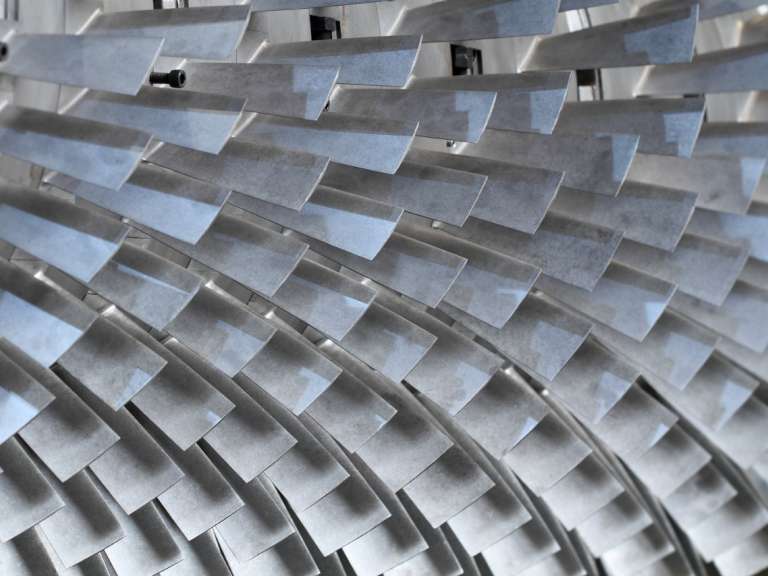One Remedy for Aging Gas Turbines: A Flange-to-Flange Repowering
Peter Kelly-DetwilerA flange-to-flange repower can increase efficiencies, boosting capacity and steam output and extending plant life for decades—and it can be performed in weeks.

While addressing the challenge of how to deal with an aging gas turbine, there are multiple options that plant operators must consider. These range from ad hoc repairs in plants slated for eventual retirement to more substantial modernization measures. A flange-to-flange repower, for instance, along with possible improvements to the existing balance of plant, significantly extends turbine life while increasing overall plant output.
Even if it is not the option ultimately selected, and a more limited approach is adopted, a complete flange-to-flange replacement should be thoroughly evaluated as a possible course of action.
The landscape affecting today's power plants continues to change, as more and increasingly lower-cost renewables are integrated into the grid. In order to remain viable in the dispatch order, power plants must operate in an increasingly flexible manner while reducing operating costs and cutting emissions. This is not just the case for plants actively dispatching into competitively structured grids. Owners of plants that serve thermal load, offering cogeneration or district heating services, must also take many of the same economic and environmental factors into account. Operators of thousands of E- and F-class turbines in the field are now at the stage where they must develop long-term plans for the eventual mothballing or life extension of existing plants. If external conditions justify the investment, repowering is a viable option.
A flange-to-flange repower of an aging gas turbine can accomplish multiple goals simultaneously. These include increasing plant life by decades while significantly improving overall performance. Output, efficiency, and availability can be augmented. Meanwhile, existing levels of exhaust energy can be maintained or even increased as needed for thermal load, such as with CHP (combined heat and power) and district heating customers. In short, such upgrades can enhance plant efficiencies and overall operational flexibility while improving environmental compliance capabilities.
These repowering exercises address a host of parts, including the rotor, casings, compressor blades and stators, combustion system, turbine system and blades, and exhaust frame. Additionally, owners have the option to make other changes, such as migrating to dual fuel or alternative fuel systems. Such enhancements can be undertaken within the timeframe of a typical outage—in as little as 15 days—allowing fleet managers to decrease overall downtime.
Flange-to-flange repowerings also include the potential to upgrade to a more advanced turbine technology that fits within the same footprint as the old one and better utilize the existing balance-of-plant assets. For example, one can move from a 7F.02 to a 7F.05, providing more megawatts and higher efficiencies, which can result in the plant being more frequently dispatched. In some cases, plant owners and managers must consider potentially necessary upgrades to balance-of-plant assets. Generator and step-up transformer upgrades, for example, might be required to increase the performance of a repowered turbine. The goal here should be to evaluate the entire ROI of both the flange-to-flange replacement and the balance of plant so that the entire system is balanced and the best outcome is achieved.
Given the extremely soft US wholesale markets of the past few years, according to Applied Energy Partners, even younger plants may need to consider repowering simply to increase flexibility, improve spark spreads, and be dispatched more frequently into the grid. In these instances, the balance-of-plant investments required may be minimal. This largely depends on the plant's mission, thermal requirements, and the opportunity to offer ancillary services that help balance the grid for renewables integration.
While flange-to-flange replacements are still not commonplace today, this situation is likely to change in the coming years, as the population of aging gas turbines increases. In some cases, more limited one-off repairs to individual parts may make more economic sense if retirement is in the plant's imminent future. However, for many power plant owners, complete flange-to-flange replacements that improve heat rates while extending plant life and improving emissions profiles will prove to be the better course of action. While these replacements can run into the eight-figure range, the ROI of this modernization measure is often quite attractive—especially when compared against investments in new greenfield plants.
Will the responsibility of intermittent energy source balancing fall primarily on batteries and energy storage, or can digitized thermal power plants take on some of the task?
Eradicating hazards completely is impossible, but new power plant safety innovations can mitigate risk.
Improving flexibility and efficiency at low loads can enhance steam plant profits, along with lowering maintenance costs.